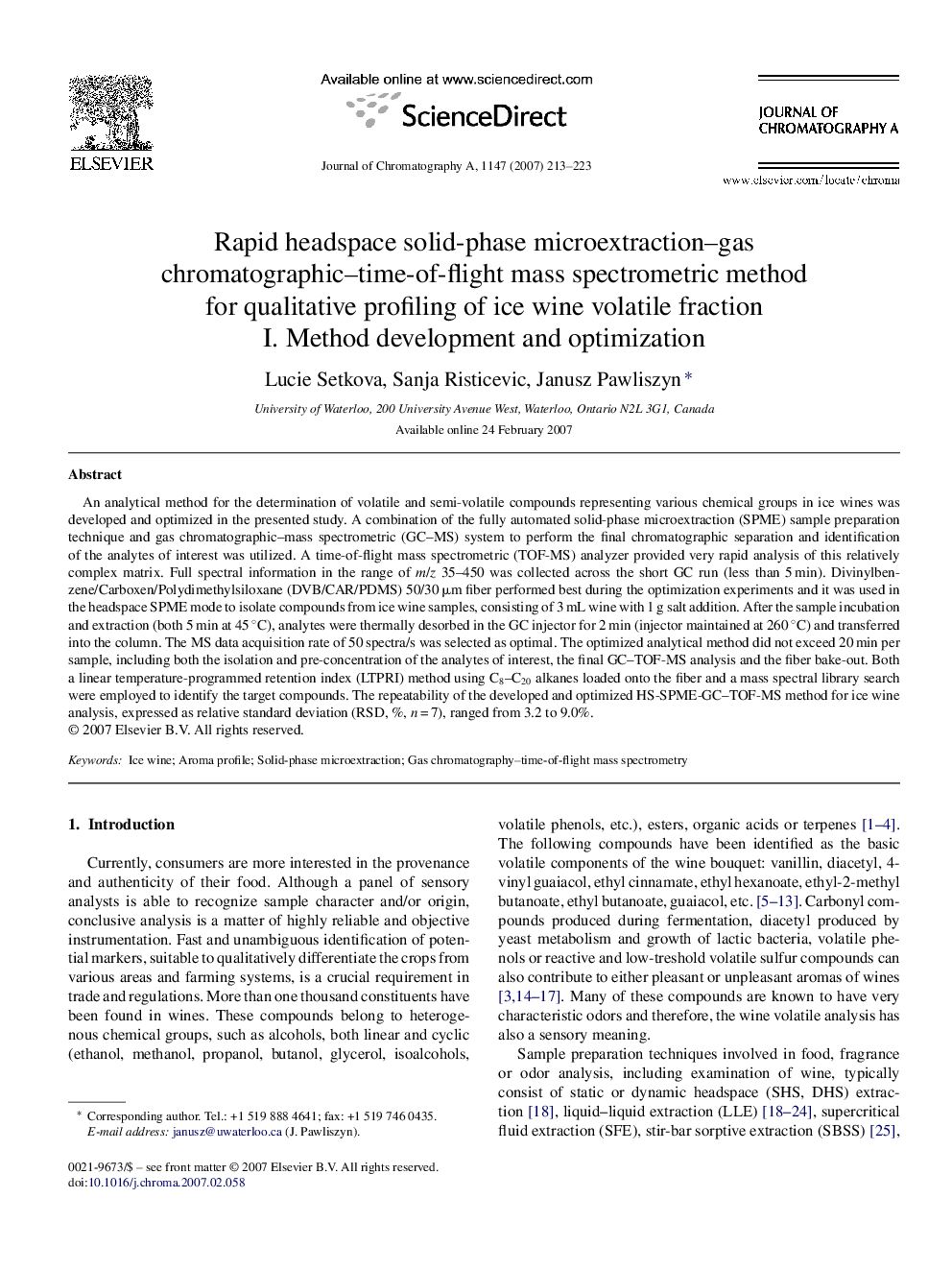| کد مقاله | کد نشریه | سال انتشار | مقاله انگلیسی | نسخه تمام متن |
|---|---|---|---|---|
| 1209007 | 965326 | 2007 | 11 صفحه PDF | دانلود رایگان |

An analytical method for the determination of volatile and semi-volatile compounds representing various chemical groups in ice wines was developed and optimized in the presented study. A combination of the fully automated solid-phase microextraction (SPME) sample preparation technique and gas chromatographic–mass spectrometric (GC–MS) system to perform the final chromatographic separation and identification of the analytes of interest was utilized. A time-of-flight mass spectrometric (TOF-MS) analyzer provided very rapid analysis of this relatively complex matrix. Full spectral information in the range of m/z 35–450 was collected across the short GC run (less than 5 min). Divinylbenzene/Carboxen/Polydimethylsiloxane (DVB/CAR/PDMS) 50/30 μm fiber performed best during the optimization experiments and it was used in the headspace SPME mode to isolate compounds from ice wine samples, consisting of 3 mL wine with 1 g salt addition. After the sample incubation and extraction (both 5 min at 45 °C), analytes were thermally desorbed in the GC injector for 2 min (injector maintained at 260 °C) and transferred into the column. The MS data acquisition rate of 50 spectra/s was selected as optimal. The optimized analytical method did not exceed 20 min per sample, including both the isolation and pre-concentration of the analytes of interest, the final GC–TOF-MS analysis and the fiber bake-out. Both a linear temperature-programmed retention index (LTPRI) method using C8–C20 alkanes loaded onto the fiber and a mass spectral library search were employed to identify the target compounds. The repeatability of the developed and optimized HS-SPME-GC–TOF-MS method for ice wine analysis, expressed as relative standard deviation (RSD, %, n = 7), ranged from 3.2 to 9.0%.
Journal: Journal of Chromatography A - Volume 1147, Issue 2, 20 April 2007, Pages 213–223